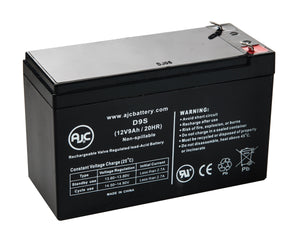History of Batteries
Single Use Batteries
In a way, the history of Sealed Lead Acid (SLA) batteries is the history of all batteries, as the lead acid battery is the first known battery in modern times. In 1799, an Italian inventor, Alessandro Volta invented the first battery. It generated a continuous current of electricity needed for laboratory experiments but it was a single use device. In 1801, French scientist Nicolas Gautherot made the observation that the wires that had been hooked up to one of these Volta batteries for electrolysis experiments would provide a small amount of secondary current after the main battery had been disconnected.
Rechargeable Batteries
In 1859, a French physicist named Gaston Plante built on these discoveries to create the first lead acid rechargeable battery. His design allowed the battery to recharge when a reverse current was passed through it.
After some years of scientific trial and error, he settled on lead plates rolled into coils, separated by cloth, and immersed in water with sulfuric acid in it. The original plates were pure lead, and needed to be charged and discharged several times before the battery could store the charge. This process was called forming. From that discovery until the present, lead acid batteries consist of two lead plates submersed in a sulfuric acid electrolyte solution.
Improvements to Lead Acid Batteries
Later in the 19th century, a French chemical engineer, Camille Alphonse Faure, improved on the lead acid battery by making the lead plates out of lead covered with lead oxide. This created two advantages: a larger active surface area for charging and shortening the forming time for the plates. Other scientists and inventors made additional improvements to the lead acid battery, increasing the energy density of the batteries, and making them lighter and more compact.
Military and Consumer Use
Lead acid batteries have been used for military vehicles since World War I. The sealed lead acid battery was introduced in the 1970’s towards the end of the Vietnam War and are still used in military vehicles. AGM, or Absorbed Glass Mat batteries were developed in 1985 for military aircraft, where power and weight were prime considerations.
Sealed lead acid batteries are used today for a variety of consumer energy needs because they are an inexpensive and reliable power source. They are able to provide the high current needed by automobile starters, and the continuous power requirements of home alarm systems and toys, and the on hand power requirements of backup systems.
In a way, the history of Sealed Lead Acid (SLA) batteries is the history of all batteries, as the lead acid battery is the first known battery in modern times. In 1799, an Italian inventor, Alessandro Volta invented the first battery. It generated a continuous current of electricity needed for laboratory experiments but it was a single use device. In 1801, French scientist Nicolas Gautherot made the observation that the wires that had been hooked up to one of these Volta batteries for electrolysis experiments would provide a small amount of secondary current after the main battery had been disconnected.
Rechargeable Batteries
In 1859, a French physicist named Gaston Plante built on these discoveries to create the first lead acid rechargeable battery. His design allowed the battery to recharge when a reverse current was passed through it.
After some years of scientific trial and error, he settled on lead plates rolled into coils, separated by cloth, and immersed in water with sulfuric acid in it. The original plates were pure lead, and needed to be charged and discharged several times before the battery could store the charge. This process was called forming. From that discovery until the present, lead acid batteries consist of two lead plates submersed in a sulfuric acid electrolyte solution.
Improvements to Lead Acid Batteries
Later in the 19th century, a French chemical engineer, Camille Alphonse Faure, improved on the lead acid battery by making the lead plates out of lead covered with lead oxide. This created two advantages: a larger active surface area for charging and shortening the forming time for the plates. Other scientists and inventors made additional improvements to the lead acid battery, increasing the energy density of the batteries, and making them lighter and more compact.
Military and Consumer Use
Lead acid batteries have been used for military vehicles since World War I. The sealed lead acid battery was introduced in the 1970’s towards the end of the Vietnam War and are still used in military vehicles. AGM, or Absorbed Glass Mat batteries were developed in 1985 for military aircraft, where power and weight were prime considerations.
Sealed lead acid batteries are used today for a variety of consumer energy needs because they are an inexpensive and reliable power source. They are able to provide the high current needed by automobile starters, and the continuous power requirements of home alarm systems and toys, and the on hand power requirements of backup systems.
Find Your Replacement Battery
Browse our website to see if we have a match for your replacement battery
Browse Batteries

